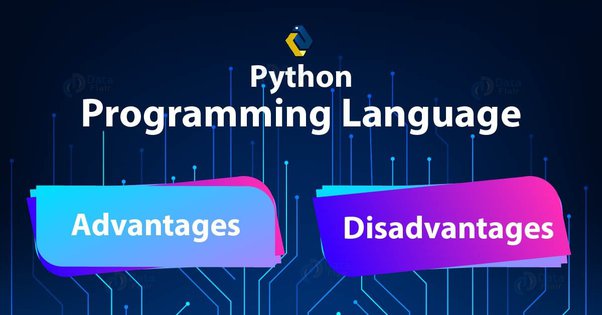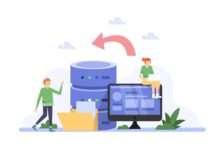Python is a backend language that is used to create responsive web pages, AI, Machine learning, and other processes. It is very commonly used nowadays. Before starting to learn the Python programming language, you must be aware of its advantages and disadvantages. This will provide you with a better understanding of how to fully utilize the find a Python programmer with High5 language.
We can design robust applications by understanding Python’s advantages and disadvantages. Let’s start with Python’s benefits and drawbacks.
Advantages of Python Programming Language
● Easy to Read and Write
Python is a human-understandable language having syntax similar to English. That’s why the code written in Python is easy to read and write.
Python is really simple to pick up and learn, which is why many people recommend it to novices. When compared to other prominent languages such as C/C++ and Java, you require fewer lines of code to do the same operation.
● Enhance Productivity
Python is a very efficient programming language. Developers can easily concentrate on solving the problem and building logic because of its simplicity. They don’t have to spend a lot of time learning the syntax or behavior of the programming language. In Python, you are able to write less code and gain more functionalities.
● Interpreted Language
Python is an interpreted programming language, which implies that the code is executed line by line. In the event of an error, it suspends further execution and communicates the problem.
Even if the application contains several faults, Python displays only one. This facilitates debugging.
● Dynamically Typed
Python doesn’t know what variable we’re talking about until we execute the program. During runtime, it assigns the data type dynamically. In Python syntax, developers don’t use data types at execution time. The interpreter automatically defines the declared variables or their data types.
● Open-source
Python is distributed under the OSI-approved open-source license. As a result, it is open to use and dissemination. You can obtain the source code, tweak it, and even share your own Python version. This is beneficial for enterprises that want to change a certain behavior and utilize their version for development.
● Vast Libraries Support
Python’s library is massive, and you can find practically all of the functions you need for your task there. As a result, you do not need to rely on third-party libraries.
Even if you don’t, a Python package manager (pip) makes it easier to import additional fantastic packages from the Python package index (PyPi). It is made up of about 200,000 packets.
● Portability
Many programming languages, such as C/C++, require you to rewrite your code in order to run the application on other platforms. You only need to write it once and then run it wherever.
Disadvantages of Python Programming Language
● Slow Speed
As previously stated, it is an interpreted language that specifies the type of runtime. Line-by-line execution of code frequently results in delayed execution.
Python’s dynamic nature is also to blame for its poor pace, as it has to do extra work while running code. As a result, Python is not employed for projects where performance is critical.
● Not Memory Efficient
Python must make a small sacrifice in order to provide developer convenience. The Python programming language consumes a lot of memory. When developing applications, this can be a disadvantage because we prioritize memory optimization.
● Database Accessibility
Python programming is simple and stress-free. In comparison to popular technologies such as JDBC and ODBC, Python’s database access layer is rudimentary and immature.
We rarely utilized Python in organizations because large enterprises require smooth interaction of complicated legacy data.
● Run-time Error
Python is a dynamic language so that a variable’s data type might be changed at any time. In the coming years, it might be possible that an integer number variable may carry a string, resulting in Runtime Errors.
● Weak in Mobile Computing
Python is most commonly used for server-side programming. Python is not used on the client-side or in mobile applications for the reasons listed. Python is not memory efficient, and its processing power is poor when compared to other languages.
Summary
Python is a simple, flexible, and all-encompassing programming language. It is an excellent choice for both beginners and experts in this field. Although it has some drawbacks, we can see that the benefits outweigh the drawbacks. Python has become one of Google’s core programming languages.
I hope you have understood the advantages and disadvantages of python programming languages. If you have any questions regarding this, you can search different websites on the internet for more information.
















